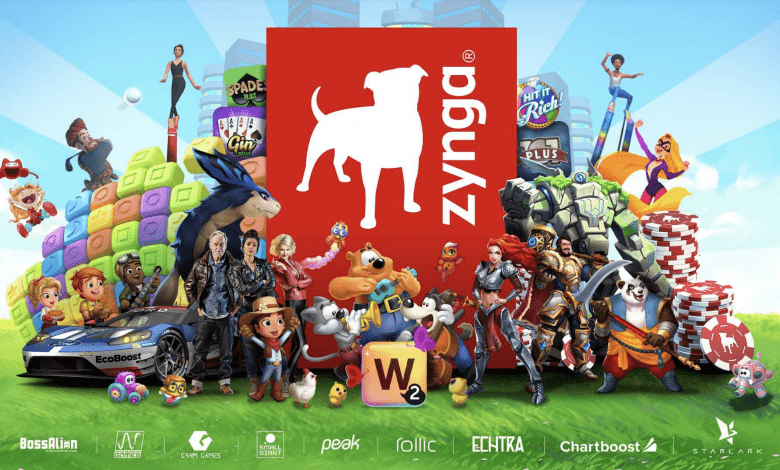Top 10 Intriguing Reasons Play To Earn Isn’t Going Away Anytime Soon
In the 50 years that home video games have been around, they have always been a way to have fun and take your mind off a hard day’s work. But now, a new generation of video games rewards players with cryptocurrency by using blockchain technologies like NFTs. In some countries, these “play to earn” games already let people make a living by playing video games. Scholarship programmes and academies have sprung up to help players figure out how to live in this strange new world.
Some people have been happy about the rise of “play-to-earn” games, saying that they give users rewards for doing things they would have done for free before. However, many gamers have been unhappy about the unwelcome addition of commerce to the world of “escape” games.
How do “play to earn” games work?
In the simplest terms, play to earn games are video games where the player can get real-world rewards.
People have been making money from video games for a long time through things like “gold farming” and unofficial markets for in-game items. However, blockchain technology and non-fungible tokens (NFTs) have completely changed the game. Non-fungible tokens, or NFTs, are cryptographically unique tokens that can be used to prove ownership of content like images or music. In blockchain games, players can own things in the game, like virtual clothes or plots of land.
In regular games, in-game items are kept on closed data networks and belong to the company that made the game. With NFTs, however, players can own the unique assets they buy. Also, once you own the NFT, you can sell it anywhere, not just on the platform where it was made, which isn’t possible with regular games.
That means NFTs representing in-game items can be bought and sold on any NFT marketplace for real money. These NFTs have real-world value because they are hard to get. With regular games, the only reason to play is that it’s fun. You pay for the game, and unless you’re a pro esports player or a streamer with a lot of followers, you’ll never be able to make money from playing it. Blockchain gaming, on the other hand, gives players a chance to win real money.
Because blockchain technology lets users transact wherever they are, players can transfer value and get paid to play no matter who they are or where they are in the world.
Play to earn games are becoming more popular.
The biggest play-to-earn game by a long shot is Axie Infinity, a monster-fighting game like Pokémon that was released in 2018 by an independent studio called Sky Mavis. In the game, players collect cartoon creatures called Axies, which are represented by NFTs. Each Axie has its own strengths and weaknesses, and players can take their Axies on adventures, fight with them, and breed them as they play. As a reward for fighting, players get Smooth Love Potion (SLP) crypto tokens, and Axie Infinity Shard (AXS) tokens are used to vote on decisions about the game and its future.
You collect cute monsters to fight with in Axie Infinity. Axie Infinity is shown.
With 2.8 million daily users and a total trading volume of $3.8 billion, Axie Infinity has become one of the most popular play-to-earn games. In countries like the Philippines and Indonesia, people even play Axie to support their families. There have also been “Axie scholarship” programmes like the one Yield Guild Games has, which let Axie owners loan their NFTs to other players.
Play-to-earn games are also helping crypto become more popular. Aleksander Leonard Larsen, co-founder of Axie Infinity, says that half of the game’s players have never used a crypto app before. But playing the game costs money, and before you can start, you have to buy three Axie NFTs, which can cost hundreds of dollars each. Larsen has said, “It’s really hard to start playing Axie right now,” which is an admission that getting new players up to speed is hard. To solve this problem, Axie plans to give new players a taste of the game by releasing free starter Axies that can only earn a small amount.
The blockchain gaming industry is in for a shake-up. Last year, the popularity of blockchain gaming peaked. Many popular games are now addressing concerns about sustainability this year. The significant players emphasize graphics, storytelling, and gameplay to keep gamers interested. The shift from Play-to-Earn to Play-and-Earn is a sign of the blockchain industry’s maturation. Last year saw a lot of craziness and questions about the future of games that don’t seem to prioritize desirability, playability, or fun.
Meanwhile, games that are making their way into the blockchain world need to understand that if their first aim is to provide an excellent gaming experience, they will succeed.
Also, read – Blockchain and Gaming: Possibilities, Challenges, and Real-World Examples
Blockchain has already changed the gaming business by rewarding players in exchange for in-game success. These Play-to-Earn games surged in popularity during the pandemic, ushering in a change in the Pay-to-Play paradigm. Blockchain will undoubtedly continue to dominate the video gaming industry, but what does the future hold for blockchain gaming? Let’s see what happens!
Play-to-Earn games generate billions of dollars in revenue.
For example, Sky Mavis‘ popular game Axie Infinity has about 2.5 million daily active users. As of August 2021, Axie had sold one billion dollars, making it the first Ethereum-based game to do it. Following the great success of Axie, the market was flooded with every possible Play-to-Earn game.
Axie Infinity: Origin
– 3 free starter Axies ✨
– All new cards 👀
– Axie upgrading 🛡️
– Live in Early Access 🪶Download: https://t.co/AKsLWu1QXz pic.twitter.com/pqNWgiiIws
— Axie Infinity🦇🔊 (@AxieInfinity) April 18, 2022
The pandemic’s excitement continues this year, but several games are concerned about sustainability and looking into measures to ensure long-term viability. Axie Infinity is one of these players, and it’s trying to improve its looks and gameplay. The principal factors in the Play-to-Earn industry are concerned about a potential backlash due to its flaws. While blockchain gaming has a long way to go, games that overlook the basics in favour of monetary gain will not last long. As the blockchain gaming sector evolves, only the best games will survive. Basic graphics with a token on the side would no longer suffice. Gamers want to have fun while earning money.
Now comes the subject of what makes a decent Play-and-Earn game.
The solution can be seen in the most successful traditional games, where all of the fundamental components, like aesthetics, gameplay, and lore, continue to entice players to invest in them. This still does not rule out the possibility of exploring new ways to create valuable digital assets using blockchain technology.

Conclusion
In conclusion, the rise of Play to Earn gaming represents a seismic shift in the gaming industry, poised to redefine the way we play, earn, and interact in virtual environments. With its innovative blend of financial incentives, ownership economy, decentralized governance, and global accessibility, P2E gaming has the potential to revolutionize the gaming landscape and become the dominant force in the coming years.
By providing players with tangible rewards, true ownership of in-game assets, and opportunities for economic empowerment, P2E games appeal to a wide range of audiences, from casual gamers to blockchain enthusiasts. The emergence of decentralized autonomous organizations (DAOs) and community-driven development models further strengthens player engagement and participation, fostering a sense of ownership and belonging within gaming communities.
As P2E games continue to evolve and mature, they are driving the development of the metaverse, a interconnected virtual universe where users can socialize, collaborate, and transact across multiple virtual worlds. This convergence of gaming, social interaction, and economic activity within the metaverse presents vast opportunities for innovation, creativity, and exploration, shaping the future of digital entertainment and online experiences.
Moreover, as P2E gaming gains mainstream recognition and adoption, it has the potential to disrupt traditional gaming models, capture a significant share of the gaming market, and redefine the relationship between players, developers, and content creators. With increasing investment, technological advancements, and community engagement, P2E gaming is poised to become the king of the gaming world, unlocking new possibilities for play, earning, and collaboration in virtual environments.
In this dynamic and rapidly evolving landscape, the future of P2E gaming holds boundless potential for creativity, inclusivity, and economic empowerment. As players, developers, and stakeholders come together to shape the future of gaming, one thing is certain: Play-to-Earn gaming is not just a trend, but a transformative force that will continue to shape the way we play and interact in the digital age and beyond.
Stay informed with daily updates from Blockchain Magazine on Google News. Click here to follow us and mark as favorite: [Blockchain Magazine on Google News].
Get Blockchain Insights In Inbox
Stay ahead of the curve with expert analysis and market updates.
latest from tech
Disclaimer: Any post shared by a third-party agency are sponsored and Blockchain Magazine has no views on any such posts. The views and opinions expressed in this post are those of the clients and do not necessarily reflect the official policy or position of Blockchain Magazine. The information provided in this post is for informational purposes only and should not be considered as financial, investment, or professional advice. Blockchain Magazine does not endorse or promote any specific products, services, or companies mentioned in this posts. Readers are encouraged to conduct their own research and consult with a qualified professional before making any financial decisions.

 Bitcoin
Bitcoin  Ethereum
Ethereum  Tether
Tether  Solana
Solana  XRP
XRP  Dogecoin
Dogecoin  USDC
USDC  Lido Staked Ether
Lido Staked Ether  Cardano
Cardano  TRON
TRON  Avalanche
Avalanche  Shiba Inu
Shiba Inu  Wrapped stETH
Wrapped stETH  Wrapped Bitcoin
Wrapped Bitcoin  Toncoin
Toncoin  Sui
Sui  Bitcoin Cash
Bitcoin Cash  WETH
WETH  Chainlink
Chainlink  Polkadot
Polkadot  Pepe
Pepe  Stellar
Stellar  LEO Token
LEO Token  NEAR Protocol
NEAR Protocol  Litecoin
Litecoin  Aptos
Aptos  Wrapped eETH
Wrapped eETH  Uniswap
Uniswap  Cronos
Cronos  USDS
USDS  Hedera
Hedera  Internet Computer
Internet Computer  Ethereum Classic
Ethereum Classic  Bonk
Bonk  Render
Render  POL (ex-MATIC)
POL (ex-MATIC)  Bittensor
Bittensor  Ethena USDe
Ethena USDe  WhiteBIT Coin
WhiteBIT Coin  Dai
Dai  dogwifhat
dogwifhat  MANTRA
MANTRA  Artificial Superintelligence Alliance
Artificial Superintelligence Alliance  Arbitrum
Arbitrum  Monero
Monero  Stacks
Stacks  Mantle
Mantle  Filecoin
Filecoin 


